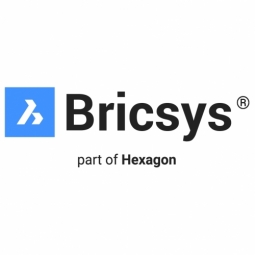技术
- 应用基础设施与中间件 - 数据库管理和存储
- 基础设施即服务 (IaaS) - 云数据库
适用行业
- 建筑物
- 医疗保健和医院
适用功能
- 设施管理
- 维护
用例
- 楼宇自动化与控制
- 库存管理
关于客户
斯特拉斯堡医院 (HUS) 是法国最古老的医疗机构之一,成立于 1105 年。现在由五家医院组成,设施面积超过 630,000 平方米。 HUS是法国阿尔萨斯地区第一大就业提供者,拥有超过12,000名员工,其中包括3000名医生。其使命包括护理、研究和教学。他们的许多设施已有几十年甚至数百年的历史,大约 70% 的区域需要石棉数据管理,以防止卫生、法律和财务风险。
挑战
斯特拉斯堡医院 (HUS) 是法国最古老的医疗机构之一,在管理石棉数据方面面临着重大挑战。设施面积超过 630,000 平方米,其中许多已有数十年甚至数百年的历史,大约 70% 的面积需要石棉数据管理,以防止卫生、法律和财务风险。石棉数据的管理是文档管理的一个主要挑战,因为包含石棉的每个建筑部分都需要拥有与其相关的正确文档。为诊断、控制、审核、中和或清除石棉而采取的任何行动都必须完整记录。事实证明,传统的分散式文档管理方式对 HUS 来说难以管理。如果没有一个中央位置来存放石棉数据,也没有一种简单的方法将该数据与特定位置关联起来,就很难访问或共享文档。这导致在第三方承包商开始在 HUS 设施中工作之前向其提供所有相关文件变得困难,导致活动正在进行但从未准确记录,或由于文件丢失或不完整而重复。
解决方案
HUS 石棉数据管理挑战的解决方案首先是用集中式数据库取代传统的文档存储方法,以托管与石棉相关的所有数据。该解决方案的另一部分是名为 Tessellat 的自定义应用程序,由当地 BricsCAD 合作伙伴 Liris 开发。 Liris 创建了一个仪表板和一个图形用户界面,由 BricsCAD 提供支持,连接到 HUS 开发的集中数据库。 Tessellat 使用 .dwg 格式,这是一种大多数 CAD 软件用于技术绘图和蓝图的开放文件格式,使其部署和使用简单且经济。基于 BricsCAD 的图形用户界面使用户能够检查和标记 HUS 设施的 3D 表示,仪表板界面允许他们访问与建筑相关的统计数据并以 CSV 格式导出结果。 Tessellat 与 HUS 的石棉数据集中数据库相结合,使文档管理问题成为过去。
运营影响
数量效益

Case Study missing?
Start adding your own!
Register with your work email and create a new case study profile for your business.
相关案例.

Case Study
Energy Saving & Power Monitoring System
Recently a university in Taiwan was experiencing dramatic power usage increases due to its growing number of campus buildings and students. Aiming to analyze their power consumption and increase their power efficiency across 52 buildings, the university wanted to build a power management system utilizing web-based hardware and software. With these goals in mind, they contacted Advantech to help them develop their system and provide them with the means to save energy in the years to come.

Case Study
Hospital Inventory Management
The hospital supply chain team is responsible for ensuring that the right medical supplies are readily available to clinicians when and where needed, and to do so in the most efficient manner possible. However, many of the systems and processes in use at the cancer center for supply chain management were not best suited to support these goals. Barcoding technology, a commonly used method for inventory management of medical supplies, is labor intensive, time consuming, does not provide real-time visibility into inventory levels and can be prone to error. Consequently, the lack of accurate and real-time visibility into inventory levels across multiple supply rooms in multiple hospital facilities creates additional inefficiency in the system causing over-ordering, hoarding, and wasted supplies. Other sources of waste and cost were also identified as candidates for improvement. Existing systems and processes did not provide adequate security for high-cost inventory within the hospital, which was another driver of cost. A lack of visibility into expiration dates for supplies resulted in supplies being wasted due to past expiry dates. Storage of supplies was also a key consideration given the location of the cancer center’s facilities in a dense urban setting, where space is always at a premium. In order to address the challenges outlined above, the hospital sought a solution that would provide real-time inventory information with high levels of accuracy, reduce the level of manual effort required and enable data driven decision making to ensure that the right supplies were readily available to clinicians in the right location at the right time.

Case Study
Intelligent Building Automation System and Energy Saving Solution
One of the most difficult problems facing the world is conserving energy in buildings. However, it is not easy to have a cost-effective solution to reduce energy usage in a building. One solution for saving energy is to implement an intelligent building automation system (BAS) which can be controlled according to its schedule. In Indonesia a large university with a five floor building and 22 classrooms wanted to save the amount of energy being used.

Case Study
Powering Smart Home Automation solutions with IoT for Energy conservation
Many industry leaders that offer Smart Energy Management products & solutions face challenges including:How to build a scalable platform that can automatically scale-up to on-board ‘n’ number of Smart home devicesData security, solution availability, and reliability are the other critical factors to deal withHow to create a robust common IoT platform that handles any kind of smart devicesHow to enable data management capabilities that would help in intelligent decision-making

Case Study
Gas Pipeline Monitoring System for Hospitals
This system integrator focuses on providing centralized gas pipeline monitoring systems for hospitals. The service they provide makes it possible for hospitals to reduce both maintenance and labor costs. Since hospitals may not have an existing network suitable for this type of system, GPRS communication provides an easy and ready-to-use solution for remote, distributed monitoring systems System Requirements - GPRS communication - Seamless connection with SCADA software - Simple, front-end control capability - Expandable I/O channels - Combine AI, DI, and DO channels








